Oticon A S FUDS01 Hearing Aid Device User Manual 90867110 G34 Dual ifu indd
Oticon A/S Hearing Aid Device 90867110 G34 Dual ifu indd
User Manual
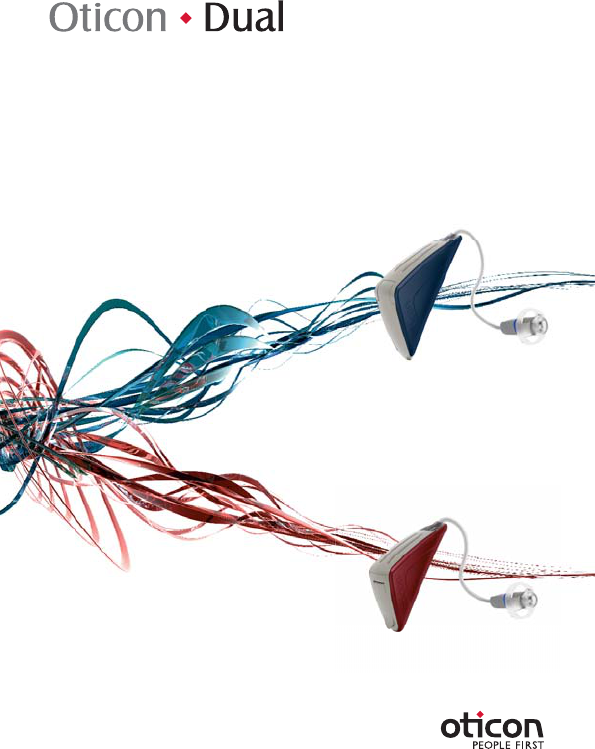
INSTRUCTIONS FOR USE

Thank you
Thank you for choosing our product as your means to
better hearing.
To support your efforts, we have put great care and
attention into making sure that your new hearing
instruments are of the highest quality and that they
are easy to use and maintain.
We recommend that you read this manual carefully
to achieve the maximum benefit of your new hearing
instruments.
Congratulations on your decision to actively improve
your hearing with today’s most advanced hearing
technology.
Contents
Instrument View 5
Turning your instruments ON and OFF 6
Putting on the hearing instrument 8
Changing batteries 10
AutoPhone 12
Caring for your hearing instrument 14
Daily maintenance Micro Moulds 16
Daily maintenance with domes 20
Using your hearing instrument 24
Common problems and their solutions 30
International warranty 34
Warnings Yellow pages
Important Notice
Please familiarise yourself with the entire
contents of this booklet before using your
hearing instruments. It contains instructions and
important informa tion about the use and
handling of your instruments and batteries.
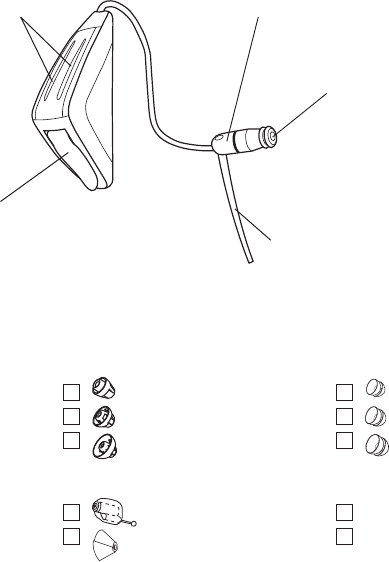
Ear grip
Battery door
Microphone
openings
Sound outlet
Speaker unit
Instrument View
Micro mould
Plus dome
Your ear piece:
Open dome: 6mm
8mm
10mm
Power dome: 8mm
10mm
12mm
Battery size: 10
Battery size: 312
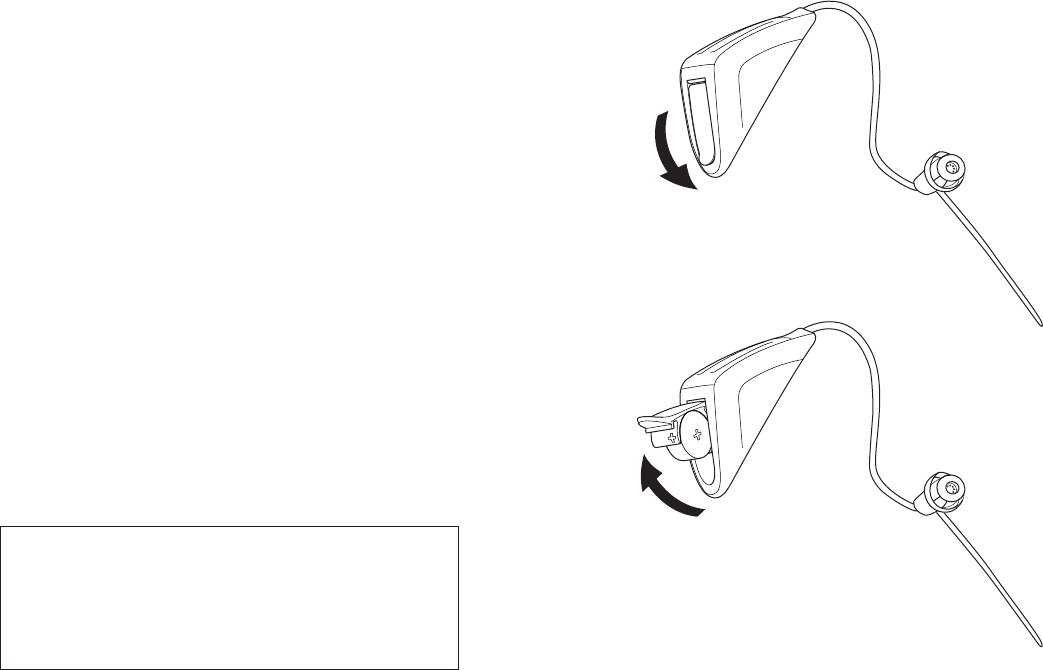
Turning your instruments ON and OFF
Turn ON your hearing instrument by closing the
battery door completely with the battery in place.
When the battery door is closed the instrument will
start up by playing a jingle. This indicates that the
battery is working and the instrument is operating.
Turn OFF your hearing instrument by opening the
battery door.
With Dual Connect (312 size battery) the hearing
instrument will turn off when the battery door is half
way open - you are able to feel a soft click. With Dual
Mini (10 size battery) the battery door must be fully
opened to turn off the instrument.
To preserve the battery, make sure your hearing
instrument is switched off when you are not wearing it.
IMPORTANT NOTICE
Open the battery compartment fully to allow air to
circulate whenever you are not using your hearing
instrument, especially at night!
ON
OFF
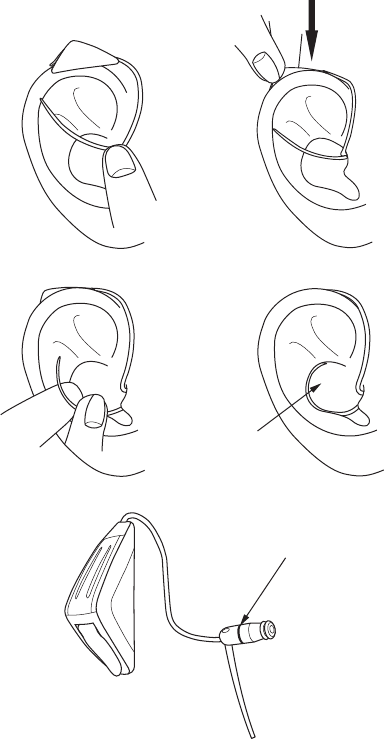
Putting on the hearing instrument
Turn the instrument on. Place the speaker, with the
ear piece attached, into your ear first and then place
the amplifier behind your ear. If the instrument
comes with a Micro Mould, make sure that the
coloured dot (blue or red) on the mould is facing
towards the amplifier unit (upwards) to ensure a
correct position in the ear canal.
Make sure that the ear piece is placed so that the
tube follows the contour of the skin.
If the instrument has an ear grip, place it in the
concha as indicated in drawing 4.
Alternatively place the amplifier behind your ear. Put
the speaker into your ear canal.
Left/right indication for hearing instrument
Blue colour indicates left instrument.
Red colour indicates right instrument.
Concha
Left/right
indicator
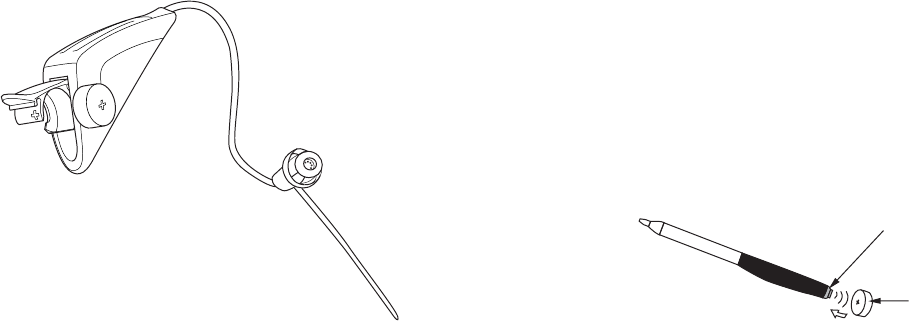
Changing batteries
Your Dual hearing device uses either a size or
battery.
To replace the battery, follow these instructions:
Open the battery door completely by pushing the •
raised edge in the bottom of the instrument.
Remove the old battery.
Remove the sticky label from the + side of the new •
battery.
Insert the new battery so that its + marking faces •
the + sign printed on the battery door. Close the
battery door.
Any moisture on the battery surface should be wiped
off before use.
When you change battery, it will take a few seconds
before the battery works to full capacity.
To assist the handling of the batteries, the magnet
placed at the end of the tool can be used.
Multitool
Magnet
Battery
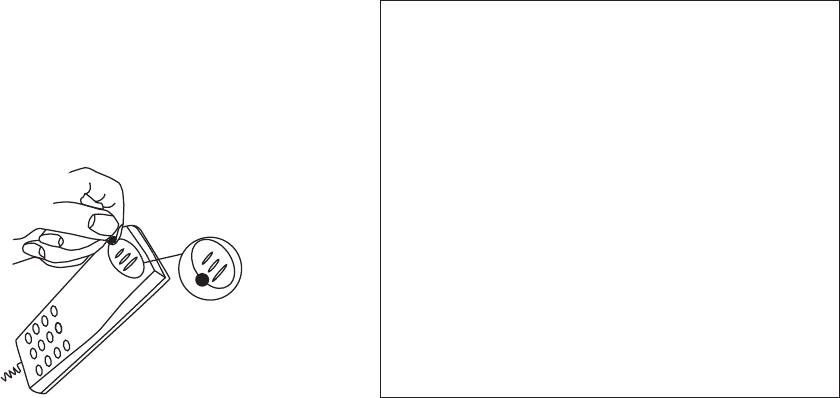
AutoPhone
Your hearing instrument may have a built-in Auto-
Phone functionality. When the hearing instrument is
close to a telephone receiver, the AutoPhone will
activate a Phone Program. When the Phone Program
is activated you will hear a number of beeps.
When you end your telephone conversation, the
hearing instrument will automatically return to the
previous program.
Not all telephones can activate the AutoPhone. The
telephone receiver must have a special magnet
fitted. Please follow the separate instructions for
mounting the magnet, which is available from your
Hearing Care Professional.
Warning
If you use an AutoPhone magnet:
• Keep magnets out of reach of children and
pets. If a magnet is swallowed, see a doctor
immediately.
• Do not wear the magnet in a breast pocket
and always keep it cm away from active
implantable devices. Preferably, use the
telephone with magnet on the opposite side
than a pacemaker or other active implantable
devices.
• Keep the magnet cm away from credit cards
and other magnetically sensitive devices.

Caring for your hearing instrument
Your ear canal produces ear wax (cerumen) which
may clog up the earpiece. Therefore your hearing
instrument contains a filter to prevent wax accumula-
tion. Consult your Hearing Care Professional for
instructions about the specific wax protection
system in your hearing instrument and how it can be
replaced.
When handling a hearing instrument, keep it over a
soft surface to avoid damage if you drop it.
Before retiring at night:
Make sure that there is no ear wax in any of the •
earpiece openings since it may reduce the hearing
instrument’s efficiency.
Open the battery door completely to allow air to •
circulate.
Cleaning the instrument
A range of dedicated cleaning tools is prepared for the
special purpose of cleaning the instrument. These
should be used to ensure the best care and perform-
ance of your hearing instruments.
Use the cloth to wipe clean the surface of the
instruments.
Replace the brush when necessary. Just pull it out of
the tool and insert a new fresh brush. Press the new
one firmly into the handle.
BrushCover Handle
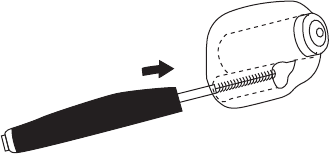
Daily maintenance Micro Mould
The Micro Mould should be cleaned regularly:
Clean the ventilation opening by pressing the •
brush through the hole while twisting it slightly.
The hearing instrument itself and Micro Mould must
never be washed or immersed in water or other
liquids!
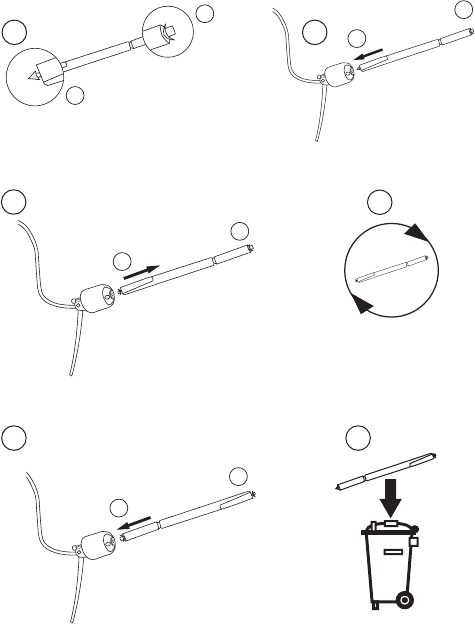
Replace the wax protection system
1. Remove the tool from the shell. The tool has two
ends, one with a new filter (A) and one with the
removal tool (B).
2. Insert the removal tool into the sound outlet of the
Micro Mould.
3. Pull the used wax filter out slowly keeping the tool
straight.
4. Turn the tool 180°.
5. Push the new filter into the sound outlet and
gently remove the tool.
6. Discard the used tool. Do not reuse.
The wax filter should be changed:
When you can see that the filter placed in the •
Micro Mould is clogged.
When the hearing device does not sound normal. •
Use WaxStop protection systems only!
12
34
5 6
1800
B
A
A
B
A
B
A
B
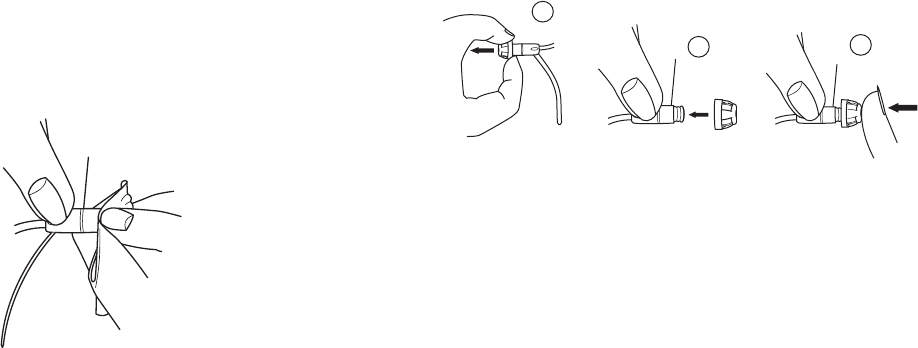
Daily maintenance with domes
Clean the speaker unit daily. Use the cloth and rub
off any earwax.
The dome should not be cleaned. When you require
a fresh, clean dome, remove the existing one and
put on a fresh one.
We recommend the dome to be replaced at least
once a month or as directed by your Hearing Care
Professional. 2
1
3
Changing the dome
The dome is easy to replace. Use a finger nail and
hold the bottom of the dome. Then pull it off. Place
the new dome on the speaker and ensure that it is
fastened securely.
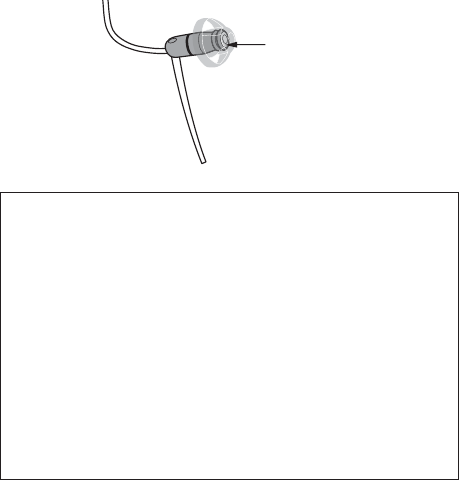
Under the dome you will notice a white wax filter
attached to the end of the speaker. This is a wax
filter that will keep debris from damaging the
speaker. If this filter becomes clogged, contact your
Hearing Care Professional for service and
replacement of the filter.
Important Notice
The dome is made of a soft, medically approved
material. If the dome comes off in the ear canal, it
will not cause any harm. If you can – carefully take
it out. If necessary, let another person help you. Do
not push the dome into the ear canal. Do not push
the speaker unit into the ear again before the dome
is removed from the ear. If you have any doubts,
contact your Hearing Care Professional.
Avoiding heat, humidity and chemicals
Your hearing instruments must never be exposed to
extreme heat e.g. left inside a parked car in the sun.
They must never be exposed to a lot of moisture e.g.
steam baths, showers or heavy rain. Nor must they
be dried in microwave ovens or other ovens.
Wipe the batteries carefully if moisture is present as
it may affect their performance. Using an anti-humi-
dity kit can help to avoid these problems and may
even extend the life of your hearing instrument.
Consult your Hearing Care Professional for further
advice.
The chemicals in cosmetics, hairspray, perfume,
aftershave lotion, suntan lotion and insect repellant
can damage your hearing instrument. You should
always remove your hearing instrument before
applying such products and allow time for the
product to dry before reinserting your hearing
instrument. If you use lotion, be sure to wipe your
hands dry before putting on your hearing instrument.
Wax filter
Using your hearing instrument
It takes time to adjust to a new hearing instrument.
How long this adjustment takes differs from person
to person. It will depend on a number of factors,
such as whether you have had a hearing instrument
before and the degree of your hearing loss.
Six easy steps to better hearing
1. In the quiet of your home
Try to accustom yourself to all the new sounds.
Listen to the many background sounds and try to
identify each sound. Bear in mind that some sounds
will seem different from what you are used to. You
may have to learn to identify them again. Note that
in time you will get accustomed to the sounds in
your environment – if not please contact your
Hearing Care Professional.
If using the hearing instrument makes you tired, take
them off for a little while and have a rest. Gradually,
you will begin to be able to listen for longer periods
of time. Soon, you will be able to wear your hearing
instruments comfortably all day long.
2. Conversation with another person
Sit with someone else in a quiet room. Face each
other so you can read facial expressions easily. You
may experience new speech sounds, which can
seem a little disturbing in the beginning. However,
after the brain has adapted to the new speech
sounds, you should hear speech clearer.
3. Listen to radio or TV
When listening to the TV or the radio, start out by
listening to news commentators since they usually
speak clearly, then try other TV programs.
If you find it difficult to listen to TV or radio, your
Hearing Care Professional should be able to give you
advice on available accessories to enhance your
listening capabilities for TV and radio.
4. In group conversations
Group situations are usually accompanied by a
greater degree of background noise and are naturally
more difficult to cope with. In such situations, focus
your attention on the person you want to hear. If you
miss a word, ask the speaker to repeat.
5. Using the telephone
When using the telephone tilt the receiver edge
lightly on your cheek-bone in order to let the sound
flow directly into the hearing instrument microphone
opening. This way, the hearing ïnstrument will not
whistle and you ensure the best conditions to
understand the conversation. When you have the
receiver in this position, remember to speak directly
into the microphone on the telephone in order to
ensure good understanding in the opposite “end of
the line”.
Your hearing instrument has an AutoPhone. Your
instrument can be set to automatically switch into a
phone program in order to improve the sound
reception further.
Remember that the Phonecoil in your hearing
instruments may pick up disturbing signals from
electronic devices, such as fax machines, computers,
televisions or similar. Make sure that the hearing
instrument has a distance of 2-3 meters to such
devices when using the Phonecoil program.
6. Wireless and mobile phones
Your hearing instrument is designed to comply with
the most stringent Standards of International
Electromagnetic Compatibility. However not all
mobile phones are hearing instrument compatible.
The varying degree of disturbance can be due to the
nature of your particular mobile phone.
If you find it difficult to obtain a good result while
using your mobile telephone, your Hearing Care
Professional should be able to give you advice on
available accessories to enhance listening capabili-
ties.
Use your hearing instruments all day long
The best way to ensure better hearing is to practice
listening until you can wear your hearing instruments
comfortably all day. In most cases, infrequent use of
hearing instruments does not give you the full
benefit.
Your hearing instruments will not restore normal
hearing. Nor will they prevent or improve a hearing
impairment resulting from a physiological condition.
What they will give you, however, is help towards
making better use of the hearing ability that you
have. If you have two hearing instruments always
wear both.
The most important benefits of wearing
two hearing instruments are:
Your ability to localize sounds will improve.•
It will be easier to understand speech in noisy •
surroundings.
You will experience a fuller, more comfortable •
sound picture.
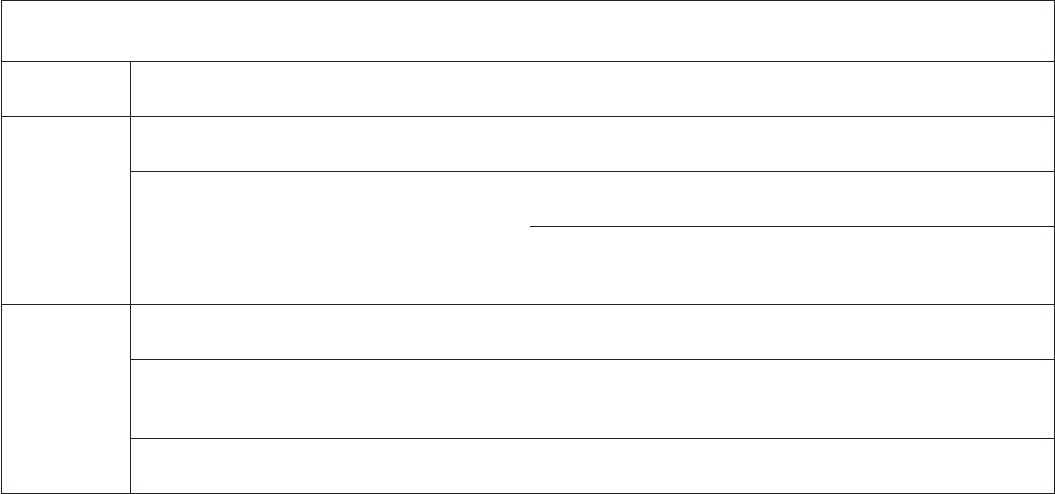
Common problems and their solutions
Symptom Possible causes Solutions
No sound Worn-out battery Change battery pg.
Clogged sound outlet Clean MicroMould or dome pg. &
Consider replacing wax protection
or dome pg. &
Intermittent
or reduced
sound
Clogged sound outlet Clean MicroMould or dome pg. &
Moisture Wipe battery and instrument
with dry cloth pg.
Worn-out battery Change battery pg.

Common problems and their solutions
Symptom Possible causes Solutions
Squealing
noise
Hearing instrument inserted improperly Reinsert hearing instrument pg.
Ear wax accumulated in ear canal Have ear canal examined by your doctor
If none of the above solutions solves the problem,
ask your Hearing Care Professional for assistance.

International Warranty
Oticon hearing instruments are covered by a limited
warranty issued by the manufacturer for a period of
12 months from the date of delivery. This limited
warranty covers manufacturing and material defects
in the hearing instrument itself, but not accessories
such as batteries, tubing, earwax filters etc.
Problems arising from improper handling or care,
excessive use, accidents, repairs made by an
unauthorized party, exposure to corrosive condi-
tions, physical changes in your ear, damage due to
foreign objects entering the device, or incorrect
adjustments are NOT covered by the limited warranty
and may void it.
The above warranty does not affect any legal rights
that you might have under applicable national
legis lation governing sale of consumer goods. Your
Hearing Care Professional may have issued a war-
ranty that goes beyond the clauses of this limited
warranty. Please consult him/her for further informa-
tion.
If you need service
Take your hearing instrument to your Hearing Care
Profes sional, who may well be able to sort out minor
problems and adjustments on the spot.
Warranty Certifi cate
Name of Owner:
Dispenser:
Dispenser Address:
Dispenser Phone:
Purchase Date:
Warranty Period: Month:
Model Left: Serial no.:
Model Right: Serial no.:
Battery Size:
Product approval, precautions
and markings
The hearing instrument may contain a radio transmit-
ter using short range magnetic induction technology
working at . MHz. The magnetic field strength of
the transmitter is < - dBµA/m @ m.
The emission power from the radio system is well
below international emission limits for human
exposure. For comparison, the radiation of the
hearing instrument is lower than unintended electro-
magnetic radiation from for example halogen lamps,
computer monitors, dishwashers etc. The hearing
instrument complies with international standards
concerning Electromagnetic Compatibility.
Due to the limited size available on the instruments
all relevant approval markings are found in this
document.
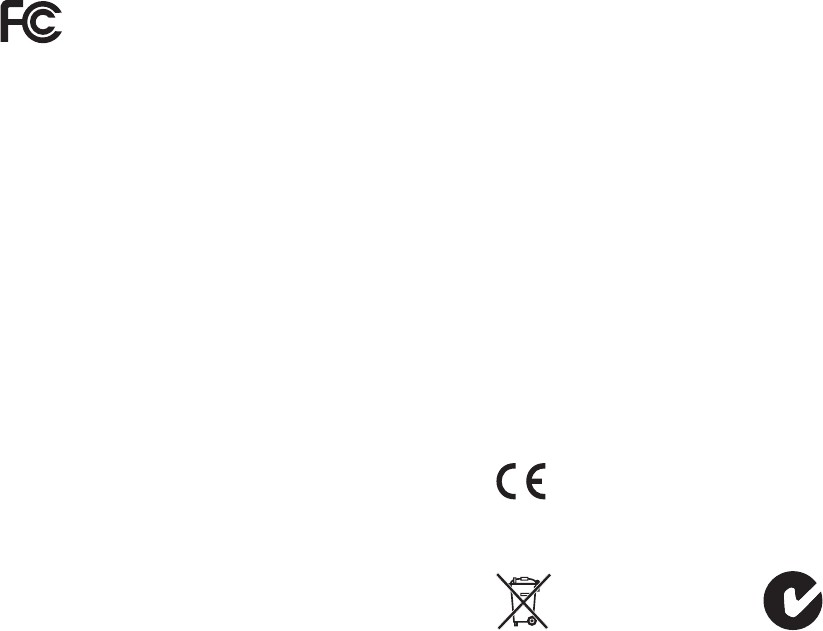
Dual XW, Dual W, Dual V and Dual Pro contains a
module* with:
The device complies with Part of the FCC rules and
RSS- of Industry Canada.
Operation is subject to the following two conditions:
. this device may not cause harmful interference.
. this device must accept any interference received,
including interference that may cause undesired
operation.
Changes or modifications not expressly approved by
the party responsible for compliance could void the
user’s authority to operate the equipment.
* This module is not applicable to Dual m, Dual m and Dual m
ID: U28FUDS01
IC: 1350B-FUDS01
Hereby, Oticon A/S declare that this hearing instru-
ment is in compliance with the essential require-
ments and other relevant provisions of Directive
//EC. Declaration of comformity is available at:
Oticon A/S
Kongebakken 9
DK-2765 Smørum
Denmark
www.oticon.com
0543 0682
Waste from electronic
equipment must be handled
according to local regulations. N1175
/ .
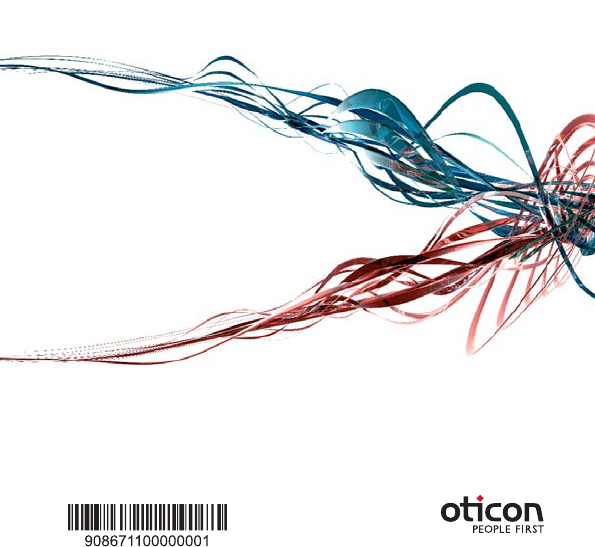
/ .
Warnings
You should familiarize yourself fully with the follow-
ing general warnings and the entire contents of this
booklet before using your hearing instruments.
Hearing instruments and batteries can be dangerous
if swallowed or used improperly. Such actions can
result in severe injury, permanent hearing loss, or
can even be fatal.
Hearing instruments, their parts, and batteries are •
not toys and should be kept out of reach of
children and anyone who might swallow these
items or otherwise cause injury to themselves.
Never change the battery or adjust the controls of •
the hearing instruments in front of infants, small
children or people with learning difficulties.
Discard batteries carefully in a place where •
infants, small children or people with learning
difficulties cannot reach them.
Batteries have occasionally been mistaken for •
pills. Therefore carefully check your medicine
before swallowing any pills.
Never put your hearing instruments or batteries in •
your mouth for any reason, as they are slippery
and could be swallowed by accident.
Dysfunction in hearing instruments
Hearing instruments may stop functioning, for •
instance if the batteries have expired or if the
receiver/loudspeaker is blocked by moisture or
earwax. You should be aware of this possibility, in
particular when you are in traffic or otherwise
dependent on warning sounds.
Interference
Your hearing instruments have been thoroughly •
tested for interference, according to the most
stringent international standards. But new techni-
cal developments constantly bring new products
into society, and some may emit electromagnetic
radiation, leading to unforeseen interference in
hearing devices. Examples include induction
cooking appliances, shop alarm systems, mobile
telephones, fax machines, personal computer
devices, X-rays, Computer tomography, etc.
Your hearing instruments are designed to comply •
with the most stringent Standards of International
Electromagnetic Compatibility. However, your
hearing instrument may cause interference with
other medical devices. Such interference can also
be caused by radio signals, power line disturbanc-
es, airport metal detectors, electromagnetic fields
from other medical devcies and eletrostatic dis-
charges.
Some Oticon hearing instruments can be supplied •
with a tamper-resistant battery compartment upon
request. This is strongly recommended for infants,
small children, and people with learning difficul-
ties.
If a battery or hearing device is swallowed, see a
doctor immediately.
Misusage
Hearing instruments should be used only as •
directed and adjusted by your Hearing Care
Professional. Misuse could result in sudden and
permanent hearing loss.
Never allow others to wear your hearing instru-•
ments as incorrect/wrongful usage could cause
permanent damage to their hearing.
Battery use
Always use batteries recommended by your •
Hearing Care Professional. Batteries of low quality
may leak and cause bodily harm.
Never attempt to recharge your batteries. They may •
explode and cause serious injury.
Never dispose of batteries by burning them. There is •
a risk that they will explode and cause serious injury.
Possible side effects
Hearing instruments may cause an accelerated •
accumulation of cerumen (ear wax).
The otherwise non-allergenic materials used in •
hearing instruments may in rare cases cause a
skin irritation.
Consult a doctor if you experience any of these side
effects.
Wax protection system
Always visually inspect your hearing instruments •
to ensure that there is no gap between the wax
protection flange and the tip of the Micro Mould.
If you are in any doubt about the use or replacement
of your wax protection system, contact your Hearing
Care Professional.